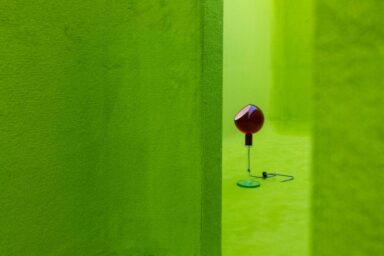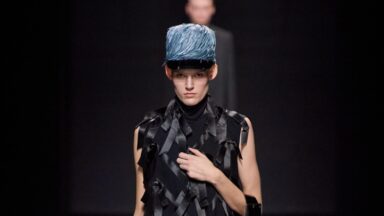DISCoVER “OLYmPUS”, THe BACKSTaGE VIDeO OF “NICo&TIMO” SHoOTING AND REaD THE INTErVIEW TO MuDEC MUSeUM’S DIREcTOR ANnA MARIA MoNTALDO ON oUR 11TH IsSUE
A conversation with Mudec Museum’s director Anna Maria Montaldo by Fiammetta Cesana
What is a museum today? A place to preserve history, but also to pave the way for social change. Caring about art is much more than legitimizing a cultural heritage: it is the means to combine and foster the dialogue between different knowledge areas, industries and populations. For this reason, contemporary museums increasingly interact with other kinds of institutions, in search of new imageries and solutions to bring together identities and communities. Designed in 2015 by David Chipperfield, the Museum of Cultures of Milan, MUDEC, is growing up with surprisingly diverse souls. Our fashion story came to life inside its walls, so we took the opportunity to talk with its director, Anna Maria Montaldo. She told us how this young museum – through its worldwide collections, multimedia installations, sophisticated restaurants, and the use of art as a way to support social integration and reduce the environmental impact – is becoming a symbol of what cultural sites are trying to embrace today.
Fiammetta Cesana: Although it is a brand new structure, MUDEC has been acclaimed in Milan as an institution-symbol of intercultural expressiveness and of art as a means of uniting peoples. So are these the values that, reflecting the globalizing thrust of the world we live in, make your museum so unique?
Anna Maria Montaldo:To start from the very beginning, this museum was set up as a result of several collections that had been owned by the City of Milan for a long time but that weren’t being used to best effect. However, the most innovative idea that made it so unique in the current social context was to go beyond the simple ethnographic exhibition venue, and build a real museum of cultures. It is an incredibly variegated museum. There are many collections from pre-Columbus South America, but also Chinese, Japanese and Egyptian collections… Here all the communities from all over the world who live in the city can find a reference point for their own cultural heritage. It was for this purpose that we created the MilanoCittàMondo project, that dedicates a detailed program every year to a particular ethnic group living in the city. This year, for example, it is the turn of Peru, and we have already planned a busy public program. The aim is to do field research on the various communities, through interviews and other anthropological investigations, and then to start a process of active participation in which members of those communities can bring their art, performances, literature, poetry, cuisine, and customs to MUDEC and other urban sites. In this way they can find through the museum their sense of identity and belonging to a group, which is the most nostalgic experience for those who live far from home. We don’t directly concern ourselves with social issues, but we try to use cultural means to facilitate the long, tough process of integration.
FC: Today the most “trendy” museum phenomenon seems to be that of multimedia exhibitions. So on the one hand there is the sense of the sacredness and untouchable nature of works of art and on the other these interactive experiences… How do these two souls coexist within the museum?
AM: You’re right, it’s all about souls, and this is a museum full of souls. Audio-visual exhibitions are a new educational product we want to offer, but that absolutely can’t replace, or even approach, the complexity of an exhibition with the original works. These immersive, multi-sensorial experiences offer a formative moment which is different from that experienced through the respectful act of observing a real painting or sculpture, assimilated as a “sacred” and untouchable object. They represent one of many formulae that the museum adopts in order to carry out its function as mediator of art and culture. Ultimately, our job is all about this: to find codes with which we can communicate universally, appreciating diversity in all its forms and without prejudices. It is a very young museum, and we are constantly trying to define it more clearly, precisely through its three great souls: firstly, that of the collections, interactive shows and academic department; then that of culture as a means of integration; and finally that of the major exhibitions which attract the general public.
FC: The absence of the materiality of the art object inevitably makes the exhibition space become an integral part of the exhibition, and therefore an artwork in its own right. How important is architecture and the study of each space in this museum?
AM: As MUDEC was designed by one of the world’s most important architects, David Chipperfield, it can certainly be said that the container is in itself a work of art. This museum expresses its modernity in a space designed in order to give a wide range of services, from the design store to the Bistrot, as well as educational services, such as the MUDEC Lab for children. Not only that but it has also a very particular governance involving both public and private sectors: the public sector is responsible for the collections, cultural heritage and exhibitions about communities, while the private sector is responsible for promoting the large temporary exhibitions, like the Banksy exhibition. Through the museum structure, we try to combine the public and private spheres, making it much more than a conservation space, but also a space for research, acceptance of diversity, and multicultural cohesion.
FC: It was interesting to explore this architecture during a fashion shoot. Today art and fashion encounters are the order of the day: from the numerous collaborations between designers and artists to new art foundations set up by major fashion houses. How do you see the relationship between these two worlds?
AM: It is an inevitable relationship: art and fashion are increasingly walking hand in hand. Certainly it is more a case of fashion drawing nourishment from art, than vice versa. One can’t compare the heritage of art to that of fashion, although both have existed as long as we have existed ourselves. But what I will never understand about fashion is its aggressiveness… for sure art is also like that sometimes, but fashion is repeatedly so and it always disappoints me when it is excessive.
Full interview on our paper issue
“Olympus”
Feature Gucci and Gucci Décor
Direction: Nicola Leone
Art Direction: Matt&Sarah
Fashion: Sarah Venturini
Photography: Matteo Strocchia
Make up: Sara Mencattelli
Hair: Maurizio Caruso
Set Design: Alice Ariano
Production: Valerio Campodonico
Fashion Assistant: Francesca Merli
Video Assistant: Giulia Bellè
Hair Assistance: Manuel Sunda
Editing and color: Nicola leone
Music: Techno my echo
Casting Director: Mattia Marazzi
Model: Niko Mat @BraveModelManagement Timo Pol @EliteModelManagement
Special thanks to:
Mudec Museo delle Culture Milano
Elettra Occhini
Cinzia Leccioli
Silvia Motta and Riccardo Gusti


